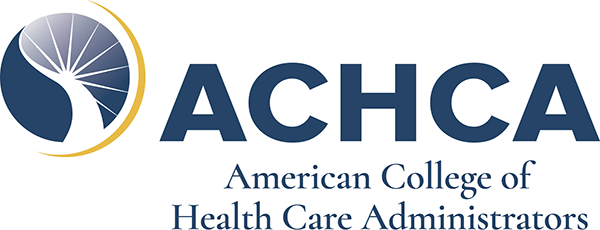According to current research, 1) “the elderly tend to overconsume empty calories, 2) remain undernourished and 3) can cause a biological imbalance with a selection of foods.” Nutritional patterns that are held by the elderly don’t always reflect healthy dietary practices regarding the choice of foods. Nutritional awareness involves 1) a proven learning process concerning the numerous varieties of appropriate foods that are readily available, and 2) can bolster the body’s response and ultimately, an improvement in nutrition.
Economic considerations and a lack of mobility can, unfortunately, place the older person in what dietitians call “a serious nutritional jeopardy.” Eating habits that evolve from early childhood tend to encourage specified dietary choices. Although these diets are primarily favored by the elderly, they don’t necessarily provide healthy meals. Store bought foods that are prepared as a “fast food” are often purchased for convenience instead of health. Fast foods may satisfy the palate but will also contain excessive salt, high saturated fats and refined sugars. In addition, caloric consumption also needs to be decreased while the need for healthy nutrients should not!
The selection of healthy foods is what dietitians call “food with the highest nutritional density.” A lack of nutritional awareness among the elderly may be due in part to an absence of nutritional education. Study of the sources and an adherence to professional counseling can identify the value of an array of available choices. Nutritional education is a specific stimulus for creative planning, and at the same time can shed light on the economic benefits of new and tasty foods. In my years of experience of working in long term care as an RN, I was able to observe the variety of healthy diets that were served to the residents of the facility. The choice of diet helps to allay some of the physical problems that adversely affect them during their stay at the facility.
One particular problem is chronic constipation with all of its associated ailments that tend to accompany this condition. This should not happen if diets are provided with a plentiful supply of fresh fruit, vegetables and whole grain products.
There is a downside, however, for those who may not be aware of the recommended daily caloric intake with larger than usual portions of food eaten (1200 to 1500 calories per day for women, and 1500 to 1800 calories per day for men). There are others who are aware but continue consuming an excessive quantity of highly processed foods that are well over the daily caloric recommendation. This can result in an unhealthy weight gain and a poorly functioning bowel.
If the aged are to take control of their mind, body and spirit, it can inevitably provide a healthy level of nutritional awareness. A change in a diet doesn’t have to be drastic. Dietary changes should, however, include a reduction in certain specific foods such as saturated fats and products that are high in refined sugar, etc. A healthy goal should include 1) various food products with fiber and fresh fruit, 2) maintaining a well-controlled weight and 3) an exercise program that is appropriate for one’s age and health.
The following is a guide that was established by the United States Senate Selection Committee on Nutrition and Human Needs.
- A caloric consumption that encourages weight control.
- A program of regular exercises sufficient to burn excessive calories.
- An increased consumption of complex carbohydrates such as naturally occurring sugars that can be found in fruit, green leafy vegetables, and whole grains.
- Elimination of sodium intake.
- Alcohol in moderation.
Following is a screening initiative that was designed by the American Dietetic Association, specifically for the elderly individual’s nutrition and health. It is useful for the caregiver who is caring for a loved one and as a check list for the independent elderly person who may be living alone.
- “I have an illness or condition that made me change the kind and/or amount of food I eat.”
- “I eat fewer than two meals a day.”
- “I eat few fresh fruits and vegetables a day.”
- “I have a toothache or a mouth problem that makes it hard to chew and just eat.”
- “I don’t always have enough money to buy food.”
- “I tend to eat alone most of the time.”
- “Without wanting to, I lost or gained ten to fifteen pounds or more over the past six months.”
- "I am not always physically able to get out and shop or even cook.”
These eight points address an increased risk to an elderly person’s health. This can result in an unhealthy diet. It is, therefore, suggested that the elderly visit their family doctor for consultation and treatment.
The following is a researched fact: “Food and eating are behavioral and social symbols that have a strong hold on our personalities. Unfortunately, the elderly are often forced to remain isolated from the mainstream of life due to the endless and often complex issues that arise daily.” When an old person eats alone, the outcome is often either an over-indulgence or the opposite – disinterest in food. It is a well-known fact that depression is a common issue in the aging community and a significant reason for loss of appetite.
Luckily, Meals on Wheels is one of numerous community programs that provides tasty and nutritious meals as well as human contact for those who are unable to shop or prepare meals. This may be due to financial limitations, a physical illness, or an unstable gait resulting in fear of falling.
The social concept ascribed to eating encourages “sharing with others” and provides a feeling for balance and belonging. All of us use food as a way of giving and receiving love, friendship, and community.
The psychologist and researcher, Abraham Maslow, looks at the need of the aged in a hierarchic fashion, “accepting the assumption that every individual must be supported in reaching the highest level of health and wellness to which he/she is motivated."
The following statistics are associated with 1) an ever-expanding aging population, 2) its importance and impact on the aged’s continued health, and 3) society’s recognition and participation with a growing, graying population.
- In 1900, U.S. citizens who were 65 and older – 3.1 million
- In 2019, U.S. citizens who were 65 and older – 54 million
- In 2018, U.S. citizens who were 85 and older – 6.5 million
- Experts predict that by year 2040, U.S. citizens who will turn 85 and older – 15 million.
Once again…an ever-expanding population.



